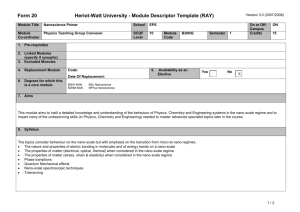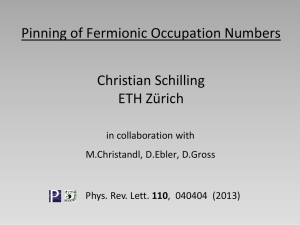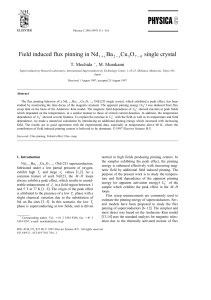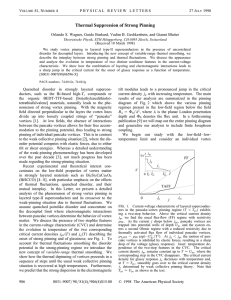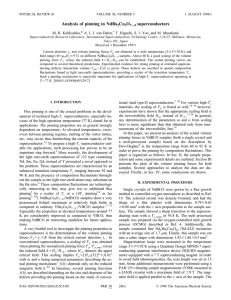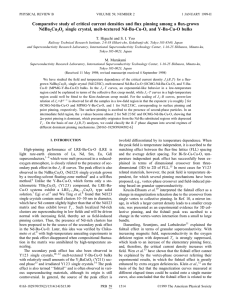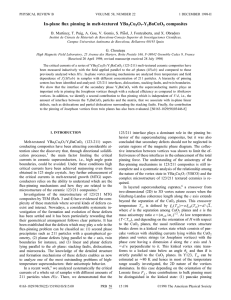X-ray Tomographic Microscopy at the SLS
advertisement
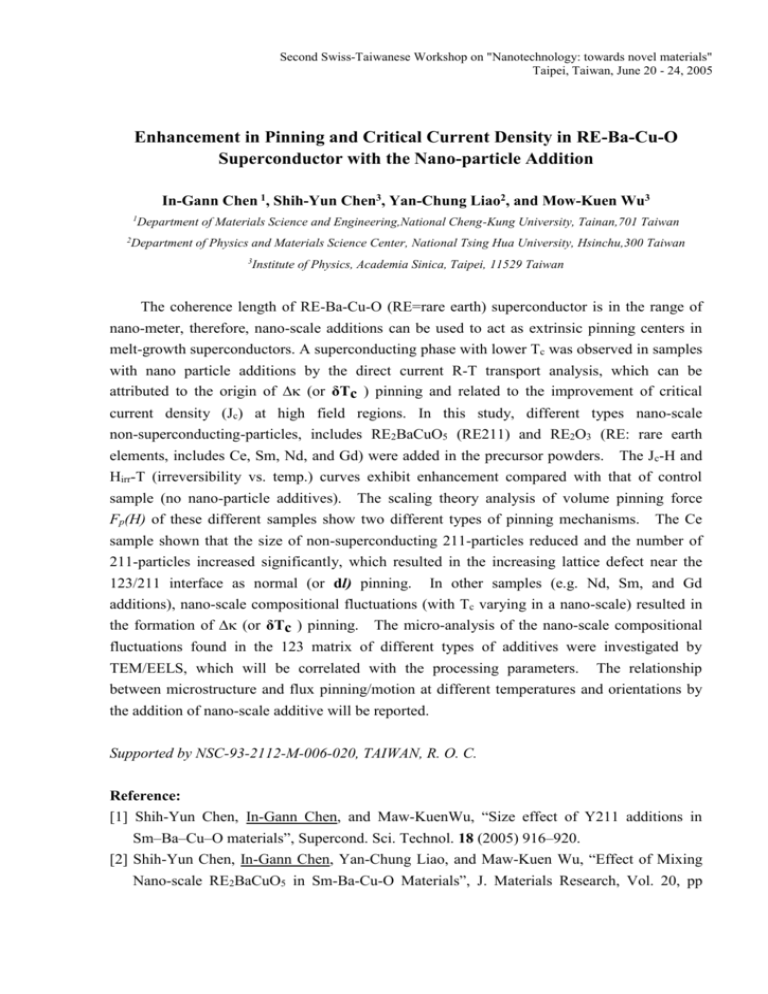
Second Swiss-Taiwanese Workshop on "Nanotechnology: towards novel materials" Taipei, Taiwan, June 20 - 24, 2005 Enhancement in Pinning and Critical Current Density in RE-Ba-Cu-O Superconductor with the Nano-particle Addition In-Gann Chen 1, Shih-Yun Chen3, Yan-Chung Liao2, and Mow-Kuen Wu3 1 Department of Materials Science and Engineering,National Cheng-Kung University, Tainan,701 Taiwan 2 Department of Physics and Materials Science Center, National Tsing Hua University, Hsinchu,300 Taiwan 3 Institute of Physics, Academia Sinica, Taipei, 11529 Taiwan The coherence length of RE-Ba-Cu-O (RE=rare earth) superconductor is in the range of nano-meter, therefore, nano-scale additions can be used to act as extrinsic pinning centers in melt-growth superconductors. A superconducting phase with lower Tc was observed in samples with nano particle additions by the direct current R-T transport analysis, which can be attributed to the origin of (or δTc ) pinning and related to the improvement of critical current density (Jc) at high field regions. In this study, different types nano-scale non-superconducting-particles, includes RE2BaCuO5 (RE211) and RE2O3 (RE: rare earth elements, includes Ce, Sm, Nd, and Gd) were added in the precursor powders. The Jc-H and Hirr-T (irreversibility vs. temp.) curves exhibit enhancement compared with that of control sample (no nano-particle additives). The scaling theory analysis of volume pinning force Fp(H) of these different samples show two different types of pinning mechanisms. The Ce sample shown that the size of non-superconducting 211-particles reduced and the number of 211-particles increased significantly, which resulted in the increasing lattice defect near the 123/211 interface as normal (or dl) pinning. In other samples (e.g. Nd, Sm, and Gd additions), nano-scale compositional fluctuations (with Tc varying in a nano-scale) resulted in the formation of ∆ (or δTc ) pinning. The micro-analysis of the nano-scale compositional fluctuations found in the 123 matrix of different types of additives were investigated by TEM/EELS, which will be correlated with the processing parameters. The relationship between microstructure and flux pinning/motion at different temperatures and orientations by the addition of nano-scale additive will be reported. Supported by NSC-93-2112-M-006-020, TAIWAN, R. O. C. Reference: [1] Shih-Yun Chen, In-Gann Chen, and Maw-KuenWu, “Size effect of Y211 additions in Sm–Ba–Cu–O materials”, Supercond. Sci. Technol. 18 (2005) 916–920. [2] Shih-Yun Chen, In-Gann Chen, Yan-Chung Liao, and Maw-Kuen Wu, “Effect of Mixing Nano-scale RE2BaCuO5 in Sm-Ba-Cu-O Materials”, J. Materials Research, Vol. 20, pp Second Swiss-Taiwanese Workshop on "Nanotechnology: towards novel materials" Taipei, Taiwan, June 20 - 24, 2005 482-488, (2005). [3] Shih-Yun Chen, Ping-Chi Hsieh, In-Gann Chen*, Maw-Kuen Wu, “Pinning Mechanism in Addition of Nano-sized Sm211 in Melt-Processed Sm-Ba-Cu-O Materials”, Journal of Materials Research, Vol. 19, pp 843-850 (2004). [4] Shih-Yun Chen, In-Gann Chen, and Maw-Kuen Wu, “Pinning Mechanism of the High Critical Current Density Sm-Ba-Cu-O Superconductors with Sm210/Pd/Pt Addition”, IEEE Transaction on Applied Superconductivity, Vol. 13, p.3087, 2003. E-Mail: ingann@mail.ncku.edu.tw Website: http://www.mat.ncku.edu.tw/~htsc/chinese/


